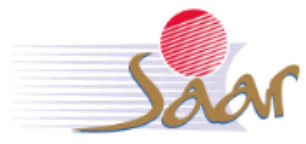 List of Insurance Company Logos With Names in Chad – World Insurance Companies Logos. Click the logos of the Insurance Companies for getting a bunch of updated information offering each insurer. We want to help you find the best Insurance in the Internet.
List of Insurance Company Logos With Names in Chad – World Insurance Companies Logos. Click the logos of the Insurance Companies for getting a bunch of updated information offering each insurer. We want to help you find the best Insurance in the Internet.
List of Insurance Companies Logos With Names in Chad
List of Insurance Companies Logos With Names in Chad. The graphic mark of a company is synonymous with its brand. In insurance, a logo is instantly recognizable and allows the customer to associate the company with the useful qualities such as trust, the fair price and many other vital issues on finding the best insurance.


CHAD
Officially the Republic of Chad, is a landlocked country in Central Africa. It is bordered by Libya to the north, Sudan to the east, the Central African Republic to the south, Cameroon and Nigeria to the southwest, and Niger to the west.
This country is divided into multiple regions: a desert zone in the north, an arid Sahelian belt in the center and a more fertile Sudanese savanna zone in the south. Lake Chad, after which the country is named, is the largest wetland in this region and the second largest in Africa.
Chad’s highest peak is the Emi Koussi in the Sahara, and N’Djamena, (formerly Fort-Lamy), the capital, is the largest city. This region is home to over 200 different ethnic and linguistic groups. Arabic and French are the official languages. Islam and Christianity are the most widely practiced religions.
Beginning in the 7th millennium BC, human populations moved into the Chadian basin in great numbers. By the end of the 1st millennium BC, a series of states and empires rose and fell in Chad’s Sahelian strip, each focused on controlling the trans-Saharan trade routes that passed through the region.
Economy and infrastructure
The United Nations’ Human Development Index ranks this nation as the seventh poorest country in the world, with 80% of the population living below the poverty line.
Women in Mao, where water is provided by a water tower. Access to clean water is often a problem in this country.
Over 80% of Chad’s population rely on subsistence farming and livestock raising for its livelihood. The crops grown and the locations of herds are determined by the local climate.
In the southernmost 10 percent of the territory lies the nation’s most fertile cropland, with rich yields of sorghum and millet. In the Sahel only the hardier varieties of millet grow, and those with much lower yields than in the south. On the other hand, the Sahel is ideal pastureland for large herds of commercial cattle and for goats, sheep, donkeys and horses.
The Sahara’s scattered oases support only some dates and legumes.
Before the development of the oil industry, cotton dominated industry and the labor market and accounted for approximately 80% of export earnings. Cotton remains a primary export, although exact figures are not available.
ExxonMobil leads a consortium of Chevron and Petronas that has invested $3.7 billion to develop oil reserves estimated at one billion barrels in southern Chad. Oil production began in 2003 with the completion of a pipeline (financed in part by the World Bank) that links the southern oilfields to terminals on the Atlantic coast of Cameroon. As a condition of its assistance, the World Bank insisted that 80% of oil revenues be spent on development projects.
In January 2006 the World Bank suspended its loan program when the Chadian government passed laws reducing this amount. On July 14, 2006, the World Bank and Chad signed a memorandum of understanding under which the Government of Chad commits 70% of its spending to priority poverty reduction programs.
Check out more insurance company logos in African Insurance Companies Logos.
Chad, Africa – World Insurance Companies Logos







